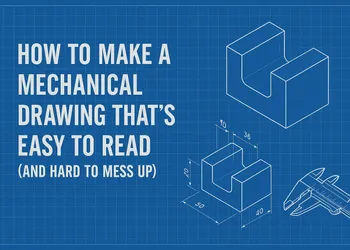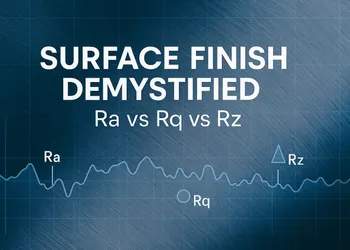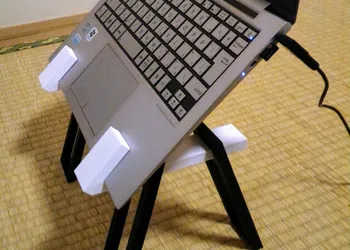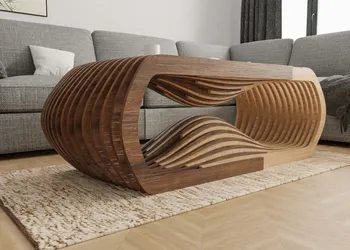Consistent Quality Parts, Every Time
The machining service your competitors wish they had
Our Services
Comprehensive manufacturing solutions tailored to your needs
CNC Machining
Our CNC machining service connects you to top-tier shops capable of producing complex parts with tight tolerances. Choose from a range of materials, finishes, and processes to get exactly what you need — on time, every time.
3D Printing
Whether you're building functional prototypes or short-run production parts, our 3D printing partners offer technologies like FDM, SLA, SLS, and MJF. Access a range of plastics, resins, and composites with fine detail and fast delivery.
And many more
Wire EDM, Sinker EDM, Hand Polish, Oxide, Anodize, Bead Blast, Electropolish, Electroplate, Surface Grind,Inspect, Laser Cut, Engrave, Nickel Plate, Passivate, Powder Coat, Tin Plate, Tumble, Vapor Polish, Water Jet, Weld
Don’t Let Inconsistent Parts Hold You Back
Inconsistent Quality, Constant Setbacks
When part quality is unpredictable, everything suffers—fit, function, timelines, and trust. One bad batch can derail your project and erode confidence in your product.
Missed Deadlines, Missed Opportunities
Delays caused by supplier issues or rework don’t just cost time—they can cost business. When every week matters, you need a partner who delivers on schedule, every time.
Juggling Suppliers, Losing Focus
Managing multiple vendors drains your time and attention. With Ziqual, you get one point of contact and a trusted network—so you can focus on engineering, not chasing updates.
Why Ziqual?
Speed
When you need parts impossibly fast, Ziqual’s Madness Mode kicks in. Same-day machining, overnight shipping — our machinists clear the queue and get it done. It’s your panic button for prototypes, last-minute fixes, or when a design flaw shows up after the test. Activate Madness Mode. Ships tonight.
Consistency
At Ziqual, every part comes with a QR code linking to its DNA—Digital Nameplate Archive. This digital recipe captures how the part was made: materials, tools, tolerances, even the machinist and machine. Whether it’s your first prototype or a repeat order, you get the same results—because consistency is built into every part.
Partnership
Most platforms route your parts to whichever shop gives them the best margin. You never know who’s making your part—and they don’t know you. At Ziqual, you build a relationship with engineers and machinists who understand your work. That familiarity means better communication, faster iterations, and consistent results—from prototype to production.
Certified for Excellence
Ziqual is AS9100 and ISO 9001 certified, meeting the highest international standards for quality and consistency. From aerospace to robotics, we deliver parts that are precise, traceable, and right the first time.
Made with Ziqual
Frequently Asked Questions
- General Questions
- Account Management
- Billing and Payments
- Technical Support
- Privacy and Security
Workflow
Upload design
Simply pick and upload your design — we support formats like STEP and XT.
Get quotes
Get quotes from vetted machine shops across the U.S. and worldwide. Compare pricing, lead times—all in one place.
Stay informed
Customers can stay as involved as they want and chat with their technician during production to ensure their part is done right for the first time.
Receive parts
After production, your parts are inspected and shipped with tracking provided. If you have any questions when they arrive, we’re here to help.
Creators Hub
Discover amazing creations from talented makers around the world
Blog
 A Crash Course in GD&T: The Language That Makes Parts Fit, Function, and Work Every Time
A Crash Course in GD&T: The Language That Makes Parts Fit, Function, and Work Every TimeLearn the basics of GD&T, why it matters in machining, and how proper tolerances improve fit, function, and manufacturing cost. A clear, fast guide for engineers.
 The Rise of Smart Sensors in CNC Machining
The Rise of Smart Sensors in CNC MachiningSmart sensors are redefining CNC machining with real-time data, predictive maintenance, and unmatched precision.
 Easy-to-Read Mechanical Drawings that Prevent Mistakes
Easy-to-Read Mechanical Drawings that Prevent MistakesA practical guide to datums, tolerances, notes, and views so machinists and QA read your drawings fast—cutting rework, delays, and cost.
 Surface Finish Demystified: Ra vs Rq vs Rz (Practical Guide)
Surface Finish Demystified: Ra vs Rq vs Rz (Practical Guide)Understand Ra, Rq (RMS), and Rz. Learn when finish matters for seals, sliding parts, optics, and coatings—plus measurement method, lay, and cutoff tips.



